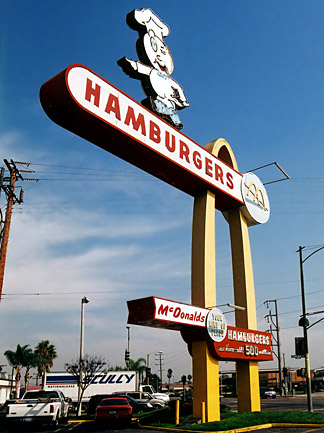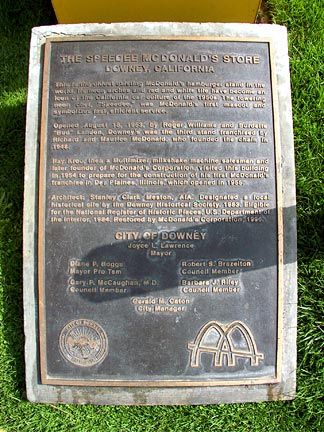| <back |
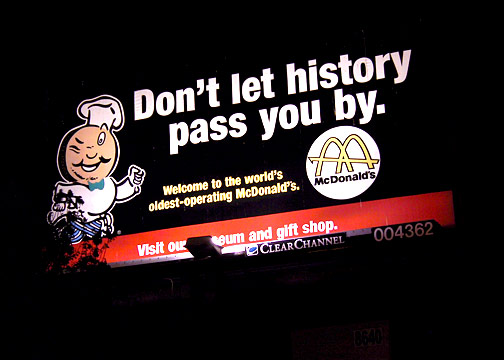 |
| Photos October 3 & 5, 2004: Kummerlowe Archive |
|
|
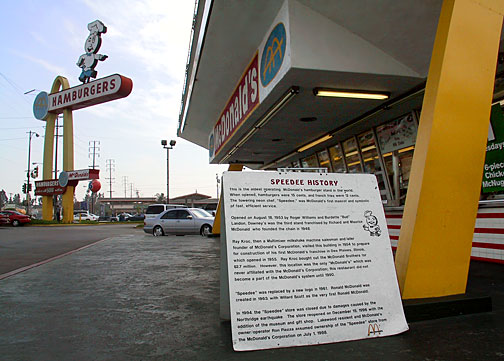 |
Speedee History |
This is the oldest operating McDonald's hamburger stand in the world. When opened, hamburgers were 15 cents, and french fries were 12 cents. The towering chef, "Speedee" was McDonald's first mascot and symbolic of fast, efficient service. Opened on August 18, 1953 by Roger Williams and Burdette "Bud" Landon, Downey's was the third franchised by Richard and Maurice McDonald who founded the chain in 1948. Ray Kroc, then a Multimixer milkshake salesman and later founder of mcDonald's Corporation, visited this building in 1954 to prepare for construction of his first McDonald's franchise in Des Plaines, Illinois which opened in 1955. Ray Kroc bought out the McDonald brothers for $2.7 million. However, this location was the only "McDonald's" which was never affiliated with McDonald's Corporation: this restaurant did not become a part of the McDonald's system until 1990. Speedee was replaced by a new logo in 1961. Ronald McDonald was created in 1963 with Willard Scott as the very first Ronald McDonald. In 1994, the "Speedee" store was closed due to damages caused by the Northridge earthquake. The store reopened on December 15, 1996 with the addition of the museum and gift shop. Lakewood resident and McDonald's owner operator Ron Piazza assumed ownership of the Speedee store from McDonald's Corporation on July 1, 1998. |
Above: The store became a franchised unit again in 1998. The operator, capitalizing on the site's historic and nostalgic value placed a brief history of the location near the walk-up windows. Below: The McDonald's Corporation's original logo which was a simplification of the candy striped Golden Arched building was recreated as topiary at the Speedee sign's base. |
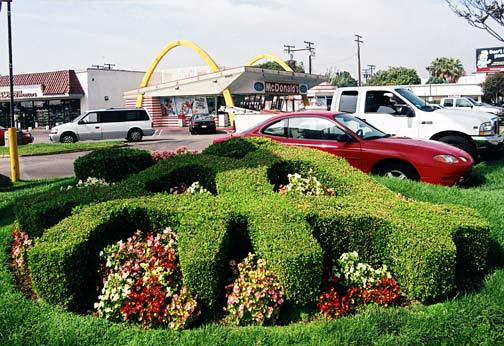 |
|
|
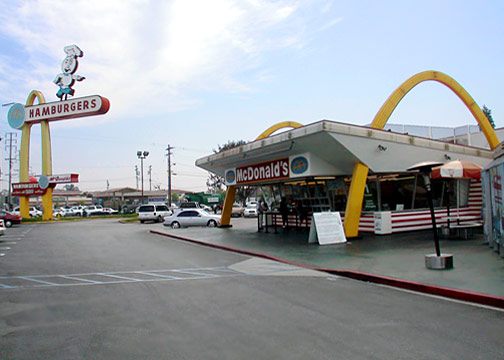 |
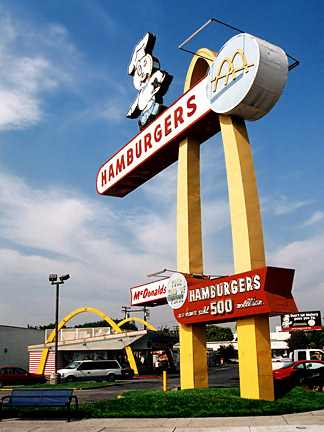 |
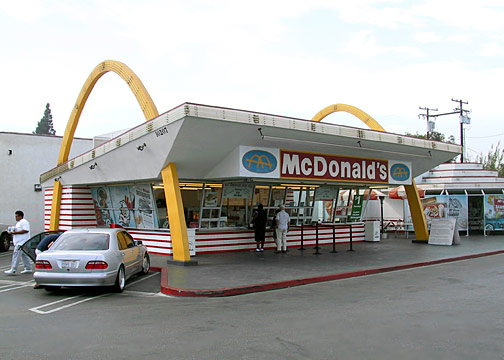 |
Everything
was carefully designed for maximum attention grabbing. Architects
Meston and Fish wanted the McDonald brothers' stands to be different
from everything else--they succeeded, and a cultural icon was
created. |
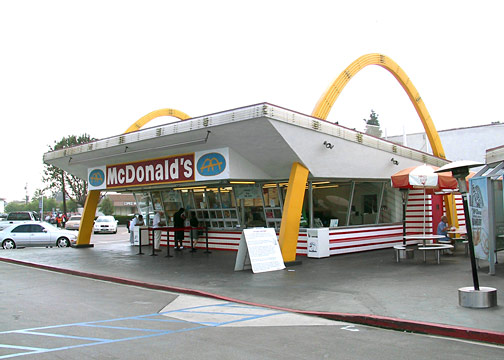 |
| <back |
